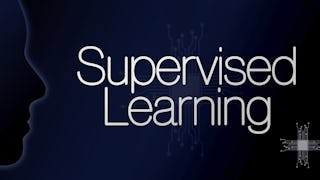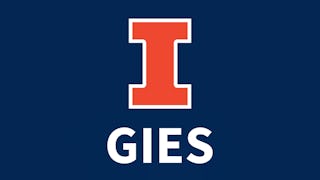Welcome to the Unsupervised Learning and Its Applications in Marketing course! In this course, you will delve into the fascinating world of unsupervised machine learning and its relevance to the field of marketing. Unsupervised learning is a powerful approach that allows us to uncover hidden patterns and insights from vast amounts of historical data without the need for explicit labels or human intervention. Through hands-on exercises and real-world examples, you will learn how to leverage the Python programming language to apply unsupervised learning algorithms in marketing contexts.


Unsupervised Learning and Its Applications in Marketing
本课程是 Machine Learning for Marketing 专项课程 的一部分

位教师:Ambica Ghai
包含在 中
您将学到什么
Apply Python as an effective tool for implementing various algorithms.
Describe unsupervised learning and list its various algorithms.
List the various applications and promising areas for the application of unsupervised learning.
您将获得的技能
- Unstructured Data
- Target Audience
- Data Mining
- Scikit Learn (Machine Learning Library)
- Data-Driven Decision-Making
- Customer Insights
- Market Analysis
- Anomaly Detection
- Customer Analysis
- Algorithms
- Machine Learning Algorithms
- Marketing
- Unsupervised Learning
- Artificial Neural Networks
- Statistical Machine Learning
- Exploratory Data Analysis
- Python Programming
- Marketing Analytics
- Applied Machine Learning
- Dimensionality Reduction
要了解的详细信息

添加到您的领英档案
36 项作业
了解顶级公司的员工如何掌握热门技能

积累特定领域的专业知识
- 向行业专家学习新概念
- 获得对主题或工具的基础理解
- 通过实践项目培养工作相关技能
- 获得可共享的职业证书

该课程共有12个模块
In this module, you will be introduced to the exciting field of unsupervised learning and its applications in marketing. You will learn about various unsupervised learning algorithms and their functionalities, including clustering, dimensionality reduction, and association rule mining. Through hands-on exercises and practical examples, you will understand how these techniques can be used to uncover hidden patterns, identify customer segments, and gain valuable insights from large and complex marketing datasets. By the end of this module, you will have the knowledge and skills to apply unsupervised learning algorithms to solve marketing challenges, optimize campaigns, and make data-driven decisions that drive business growth. Get ready to unlock the potential of unsupervised learning and revolutionize your marketing strategies.
涵盖的内容
5个视频5篇阅读材料4个作业1个讨论话题
This module provides a comprehensive introduction to clustering algorithms and their practical application using Python. You will gain a solid understanding of the fundamental concepts of clustering and explore different algorithms such as k-means, hierarchical clustering, and DBSCAN. Through hands-on exercises and coding examples, you will learn how to preprocess and transform data, select appropriate clustering algorithms based on data characteristics, and evaluate the performance of clustering models. Additionally, you will acquire the necessary skills to interpret and visualize clustering results, allowing you to gain valuable insights into patterns and structures within your data. By the end of this module, you will be equipped with the knowledge and practical experience to confidently apply clustering algorithms to real-world marketing datasets, enabling you to uncover meaningful clusters and make informed business decisions based on the extracted knowledge.
涵盖的内容
4个视频4篇阅读材料4个作业
This assessment is a graded quiz based on the modules covered this week.
涵盖的内容
1个作业
In this module, you will dive into the fascinating world of customer segmentation and dimensionality reduction techniques. Customer segmentation allows you to divide your customer base into distinct groups based on shared characteristics, behaviors, or preferences. By understanding the unique needs and preferences of different customer segments, you can tailor your marketing strategies to effectively target and engage each segment. You will learn various clustering algorithms and techniques to perform customer segmentation using Python, enabling you to uncover meaningful insights about your customers and optimize your marketing efforts. Additionally, you will explore dimensionality reduction techniques, which are essential for dealing with high-dimensional data and extracting the most relevant features. Through hands-on exercises and real-world examples, you will gain practical skills in implementing customer segmentation and dimensionality reduction techniques to unlock valuable insights and drive marketing success.
涵盖的内容
4个视频4篇阅读材料4个作业1个讨论话题
This module provides an opportunity to apply dimensionality reduction algorithms using Python. You will explore different types of dimensionality reduction algorithms, such as Principal Component Analysis (PCA), t-distributed stochastic neighbor embedding (t-SNE), and autoencoders. Through practical exercises and code implementations, you will gain hands-on experience in reducing the dimensionality of datasets, visualizing high-dimensional data in lower dimensions, and interpreting the results. Additionally, you will be introduced to anomaly detection techniques, which involve identifying rare or unusual data points that deviate from the norm. By the end of this module, you will have a solid understanding of dimensionality reduction algorithms and their application in real-world marketing scenarios, as well as the ability to detect anomalies effectively.
涵盖的内容
4个视频4篇阅读材料4个作业
This assessment is a graded quiz based on the modules covered this week.
涵盖的内容
1个作业
In this module, you will delve into the practical aspects of anomaly detection by implementing various types of anomaly detection algorithms using Python. You will gain hands-on experience in applying algorithms such as statistical methods, clustering-based approaches, and machine learning-based techniques to detect anomalies in marketing data. Through step-by-step coding examples and guided exercises, you will learn how to preprocess data, select appropriate algorithms for different scenarios, tune parameters, and evaluate the performance of the models. By the end of this module, you will have a solid understanding of the implementation details of different anomaly detection algorithms and be equipped to apply them effectively in real-world marketing scenarios.
涵盖的内容
4个视频4篇阅读材料4个作业
Welcome to the module on Autoencoders and Association Learning! In this module, you will explore the fascinating field of autoencoders and its application in association learning, specifically in market basket analysis. In this module, you will learn how to apply autoencoders to extract meaningful features from data and use them to perform association learning using techniques such as the Apriori algorithm and FP-Growth algorithm. Through hands-on exercises and real-world examples, you will gain practical skills in implementing autoencoders and conducting association analysis to discover valuable insights from large-scale transactional data.
涵盖的内容
4个视频4篇阅读材料4个作业1个讨论话题
This assessment is a graded quiz based on the modules covered this week.
涵盖的内容
1个作业
In this module, you will delve into the world of semi-supervised learning. Semi-supervised learning is a powerful technique that combines the strengths of both supervised and unsupervised learning. It leverages a small amount of labeled data along with a large amount of unlabeled data to improve model performance. Through this module, you will gain an understanding of the concepts and principles behind semi-supervised learning. You will also learn how to implement semi-supervised learning algorithms using Python, enabling you to leverage the vast amounts of unlabeled data available in many real-world scenarios. By the end of this module, you will have the knowledge and skills to apply semi-supervised learning techniques in various domains, unlocking new opportunities for predictive modeling and data analysis.
涵盖的内容
4个视频4篇阅读材料4个作业1个讨论话题
In this module, you will delve into the fascinating world of recommender systems and explore the concept of Boltzmann machines, which are powerful generative unsupervised models. You will gain a solid understanding of how Boltzmann machines work and their applications in recommendation systems. Through hands-on exercises and practical examples in Python, you will learn how to implement collaborative filtering using Boltzmann machines to make personalized recommendations. Additionally, this module will also touch upon the promising areas of unsupervised learning and provide insights into the future possibilities and advancements in the field. By the end of this module, you will be equipped with the knowledge and skills to build effective recommender systems and have a broader understanding of the potential of unsupervised learning in various domains.
涵盖的内容
4个视频4篇阅读材料4个作业
This assessment is a graded quiz based on the modules covered this week.
涵盖的内容
1个视频1个作业
获得职业证书
将此证书添加到您的 LinkedIn 个人资料、简历或履历中。在社交媒体和绩效考核中分享。
位教师

从 Marketing 浏览更多内容
 状态:免费试用
状态:免费试用O.P. Jindal Global University
 状态:免费试用
状态:免费试用University of Colorado System
 状态:免费试用
状态:免费试用University of Illinois Urbana-Champaign
 状态:免费试用
状态:免费试用University of Michigan
人们为什么选择 Coursera 来帮助自己实现职业发展




常见问题
To access the course materials, assignments and to earn a Certificate, you will need to purchase the Certificate experience when you enroll in a course. You can try a Free Trial instead, or apply for Financial Aid. The course may offer 'Full Course, No Certificate' instead. This option lets you see all course materials, submit required assessments, and get a final grade. This also means that you will not be able to purchase a Certificate experience.
When you enroll in the course, you get access to all of the courses in the Specialization, and you earn a certificate when you complete the work. Your electronic Certificate will be added to your Accomplishments page - from there, you can print your Certificate or add it to your LinkedIn profile.
Yes. In select learning programs, you can apply for financial aid or a scholarship if you can’t afford the enrollment fee. If fin aid or scholarship is available for your learning program selection, you’ll find a link to apply on the description page.
更多问题
提供助学金,



